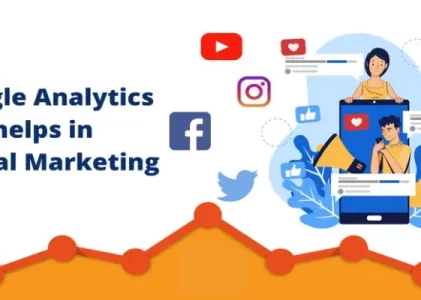In today’s fast-paced digital world, simply launching a digital marketing campaign isn’t enough. To ensure success and return on investment (ROI), businesses must track and analyze their marketing performance. This is where Google Analytics becomes indispensable. As one of the most powerful tools available, Google Analytics allows marketers to monitor key metrics, comprehend user behavior and use real-time data to influence decisions.
Whether you’re managing SEO, social media, content marketing, or paid ads, Google Analytics can show you what’s working and what needs improvement. Understanding how to measure success through this tool is essential for digital marketers who want to stay ahead of the curve. You can get the abilities required to use Google Analytics more successfully for improved outcomes by enrolling in a digital marketing course in Tirunelveli.
Understanding the Basics of Google Analytics
Before diving into the metrics, it’s important to grasp what Google Analytics offers. The platform collects and presents data from websites, allowing marketers to track everything from the number of visitors to user interaction, demographics, and traffic sources. By properly configuring your analytics account, you’ll have access to a goldmine of insights.
Key elements include:
- Users and Sessions: Understand how many people visit your site and how often.
- Bounce Rate: Measure how many users leave without interacting.
- Session Duration: Analyze how long users stay on your site.
- Traffic Channels: Determine whether users come from search engines, social media, or referrals.
Setting Up Goals and Conversions
To truly measure success, it’s crucial to define your goals. In Google Analytics, a goal can be anything from completing a form, downloading a file, signing up for a newsletter, or making a purchase. These goals help evaluate how well your site fulfills target objectives.
Marketers can:
- Create destination goals (e.g., “Thank You” pages).
- Track event goals like video plays or button clicks.
- Set up duration and pages/session goals to measure engagement.
If conversions are your focus, linking Google Analytics with Google Ads or e-commerce platforms helps track ROI from your paid campaigns. These techniques are commonly covered in the Digital Marketing Course in Kanchipuram, offering real-world practice in campaign optimization.
Analyzing Traffic Sources
Assessing the effectiveness of your marketing channels requires knowing where your website visitors comes from. Google Analytics categorizes traffic sources into direct, organic search, paid search, referral, social, and email.
You can evaluate:
- Which channels drive the most traffic?
- Which ones convert better?
- Are there emerging platforms bringing in new users?
Utilizing Behavior Reports
Google Analytics’ Behavior section provides information on how people engage with the material on your website. This includes which pages are most viewed, how visitors go across your website and where they leave off.
Key tools include:
- Site Content Reports: Understand your top-performing content.
- Landing Pages: See which entry pages attract traffic.
- Exit Pages: Identify where users leave your site.
Behavior Flow is a visual tool that shows the path users take, helping marketers spot user trends and friction points. Professionals trained in a Digital Marketing Course in Salem learn to optimize content and structure for better engagement and conversions.
Measuring Campaign Performance
If you’re running marketing campaigns like Google Ads, Facebook Ads, or email newsletters, it’s essential to use UTM parameters to track them in Google Analytics. Campaign tracking helps you pinpoint which efforts are delivering the best results.
Through the Acquisition > Campaigns section, marketers can measure:
- Click-through rates (CTR)
- Conversion rates
- Cost per conversion
- ROI from each campaign
Custom Dashboards and Reports
One of the most powerful features of Google Analytics is the ability to build custom dashboards and reports. These can be tailored to your business goals and marketing KPIs. You can track multiple metrics in one place and automate email delivery to your team or stakeholders.
A few examples:
- A dashboard tracking daily traffic and conversions.
- A report showing weekly campaign performance.
- A real-time dashboard during promotions or events.
Learning how to build and share custom dashboards is a valuable skill taught in advanced modules of the Digital Marketing Training in Dindigul.
Without data, gauging the effectiveness of your digital marketing campaigns is like trying to navigate a ship without a compass. Google Analytics provides clarity, direction, and actionable insights that can help refine your strategies, maximize your ROI, and reach your marketing goals effectively.
Comments
0 comments

